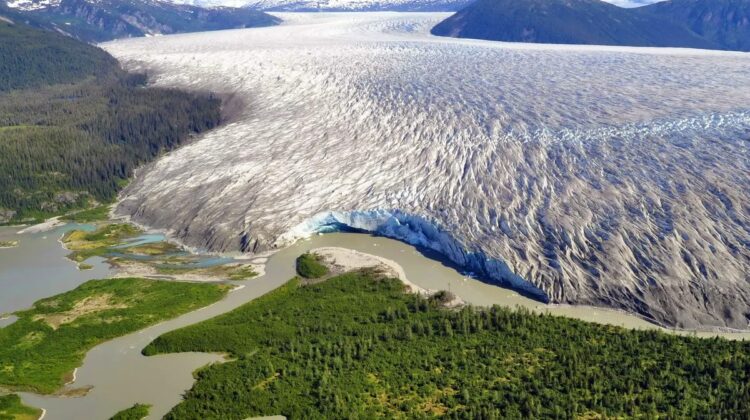
Over 100 glaciers in the Juneau Icefield have disappeared completely.
The rapid disappearance of glaciers in Alaska’s Juneau Icefield has raised alarms among scientists, who warn of an impending irreversible tipping point due to accelerated melting. Recent research, spanning over 250 years from the Little Ice Age to 2020, reveals a startling increase in ice loss, particularly since the turn of the 21st century.
A team of international researchers meticulously pieced together historical records, photographs dating back to the pre-satellite era, and modern satellite imagery to track changes in the 3,885-square kilometer icefield. Their findings underscore a concerning trend: while glacier volume loss remained relatively stable from 1770 to 1979, it surged dramatically in recent decades. Between 2010 and 2020 alone, the rate of ice loss doubled, leading to the disappearance of 108 glaciers that once graced the landscape.

Image credit: Nenad Basic/Shutterstock.com
Dr. Robert McNabb, one of the study’s authors, likened the process to solving the world’s hardest jigsaw puzzle, emphasizing the precision with which they reconstructed the icefield’s historical elevation. The team’s analysis not only confirmed the loss of nearly a quarter of the icefield’s original volume but also highlighted the vulnerability of Alaskan icefields to climate change.
Dr. Bethan Davies, the lead researcher, attributed the accelerated melting to rising global temperatures, noting that flat icefields like Juneau’s are particularly susceptible because ice loss occurs across their entire surface area. Unlike more rugged terrain, these plateau icefields cannot retreat to higher elevations to find a new equilibrium, exacerbating their vulnerability.

Previously, projections suggested that the rate of ice volume loss would remain relatively steady until after 2070. However, the latest findings indicate a need for revised estimates, with potential implications not only for the Juneau Icefield but for similar icefields worldwide. Davies stressed that current glacier projections may underestimate future melt rates, potentially pushing these vital ecosystems beyond a critical tipping point of irreversible recession.
“As glacier thinning continues unabated,” Davies cautioned, “and ice retreats to lower, warmer elevations, feedback processes could prevent future regrowth, perpetuating the cycle of decline.”
The implications are dire for the Juneau Icefield and beyond, prompting urgent calls for enhanced climate action to mitigate further damage to these fragile environments. As the world grapples with the consequences of a warming climate, the fate of these glaciers serves as a stark reminder of the urgent need for global cooperation in combating climate change before it’s too late.

Leave a Reply